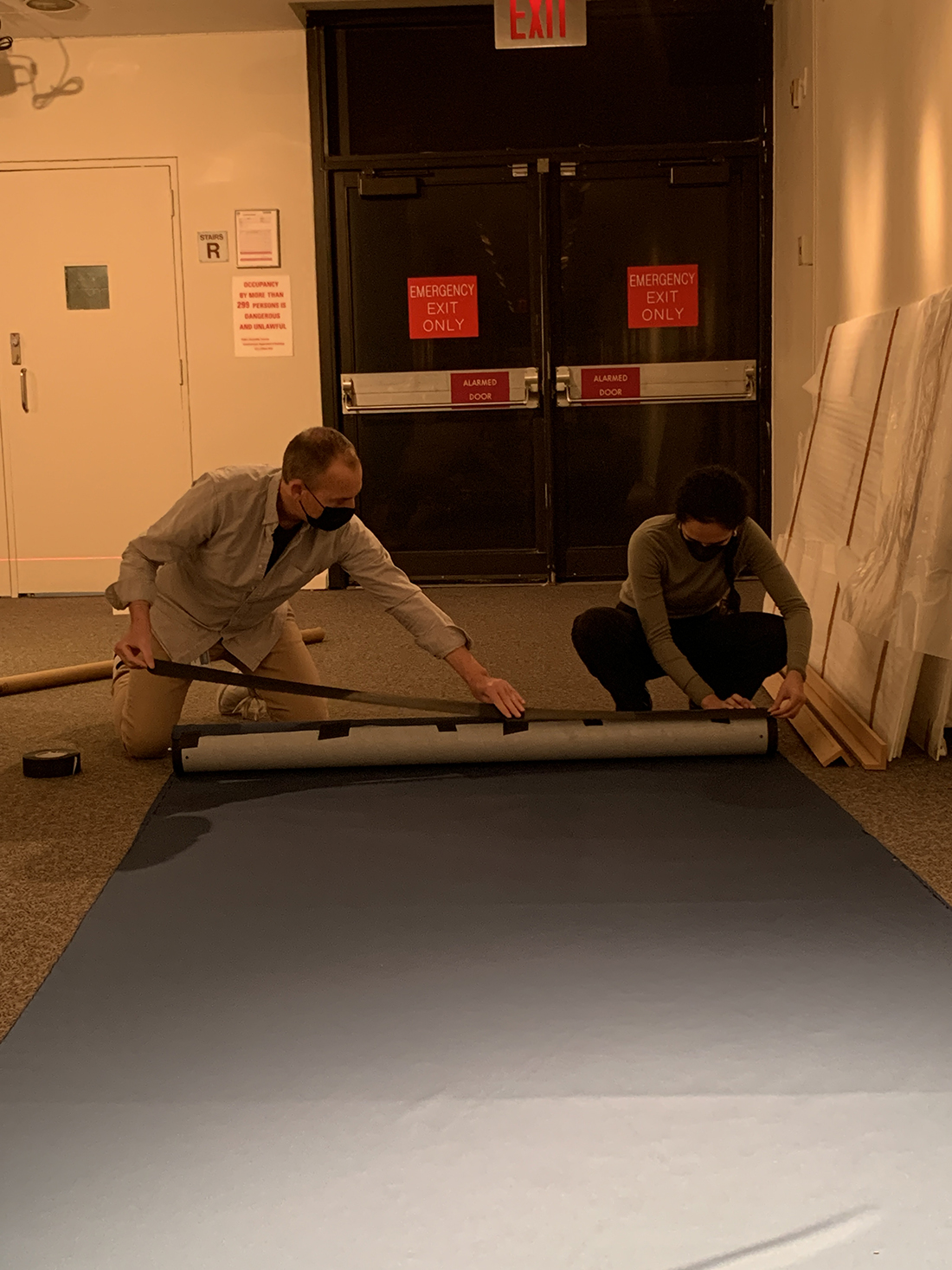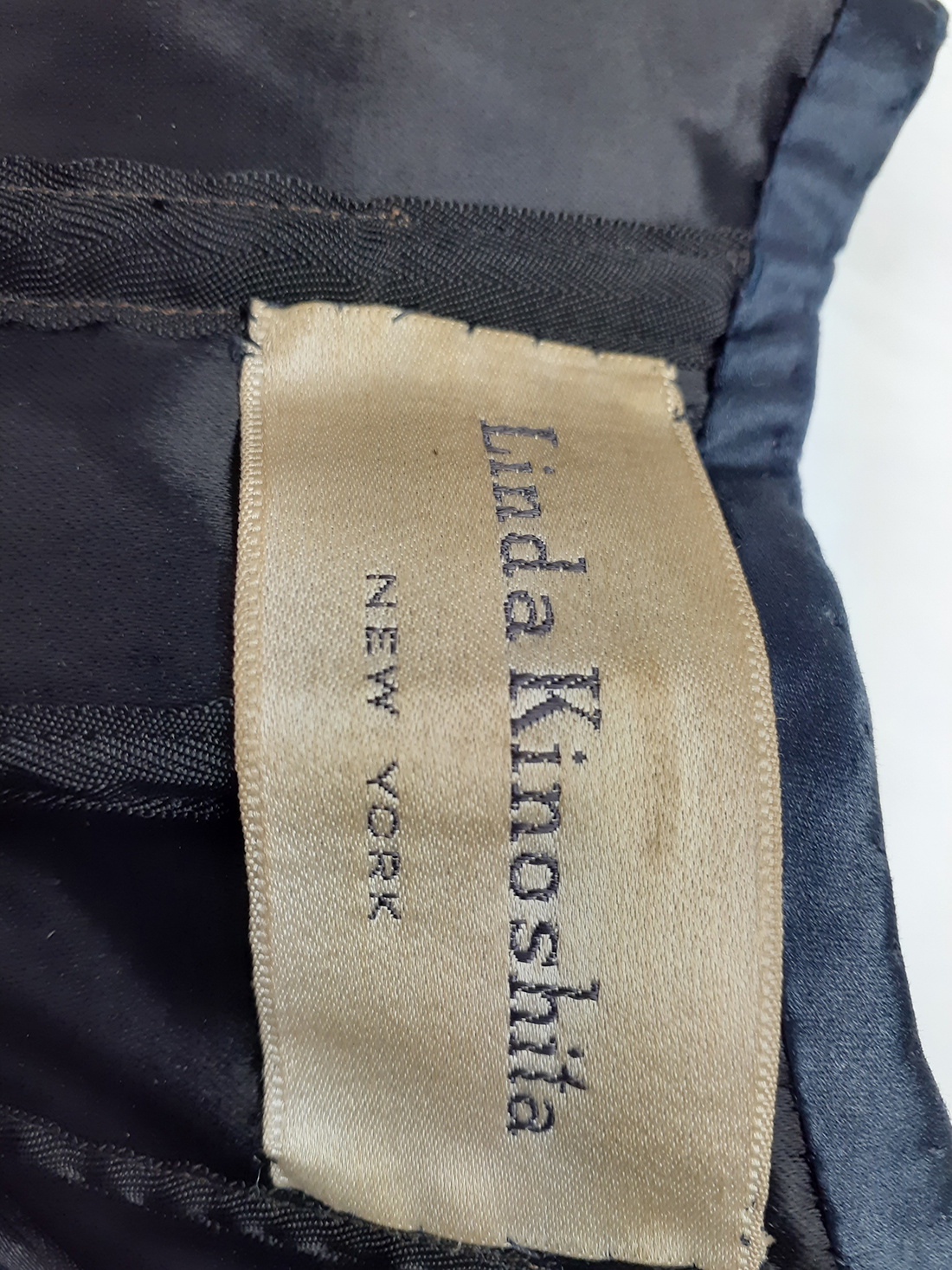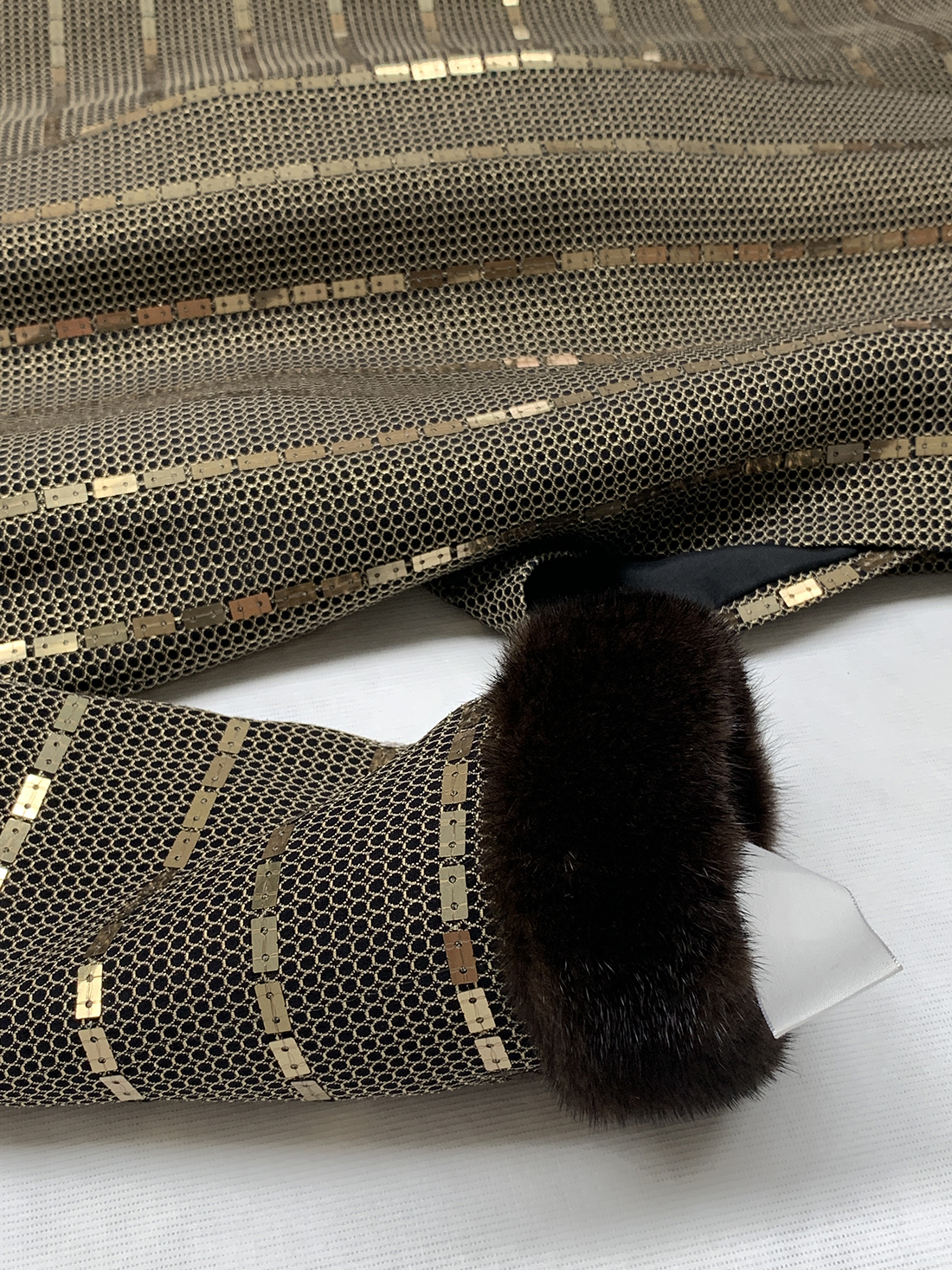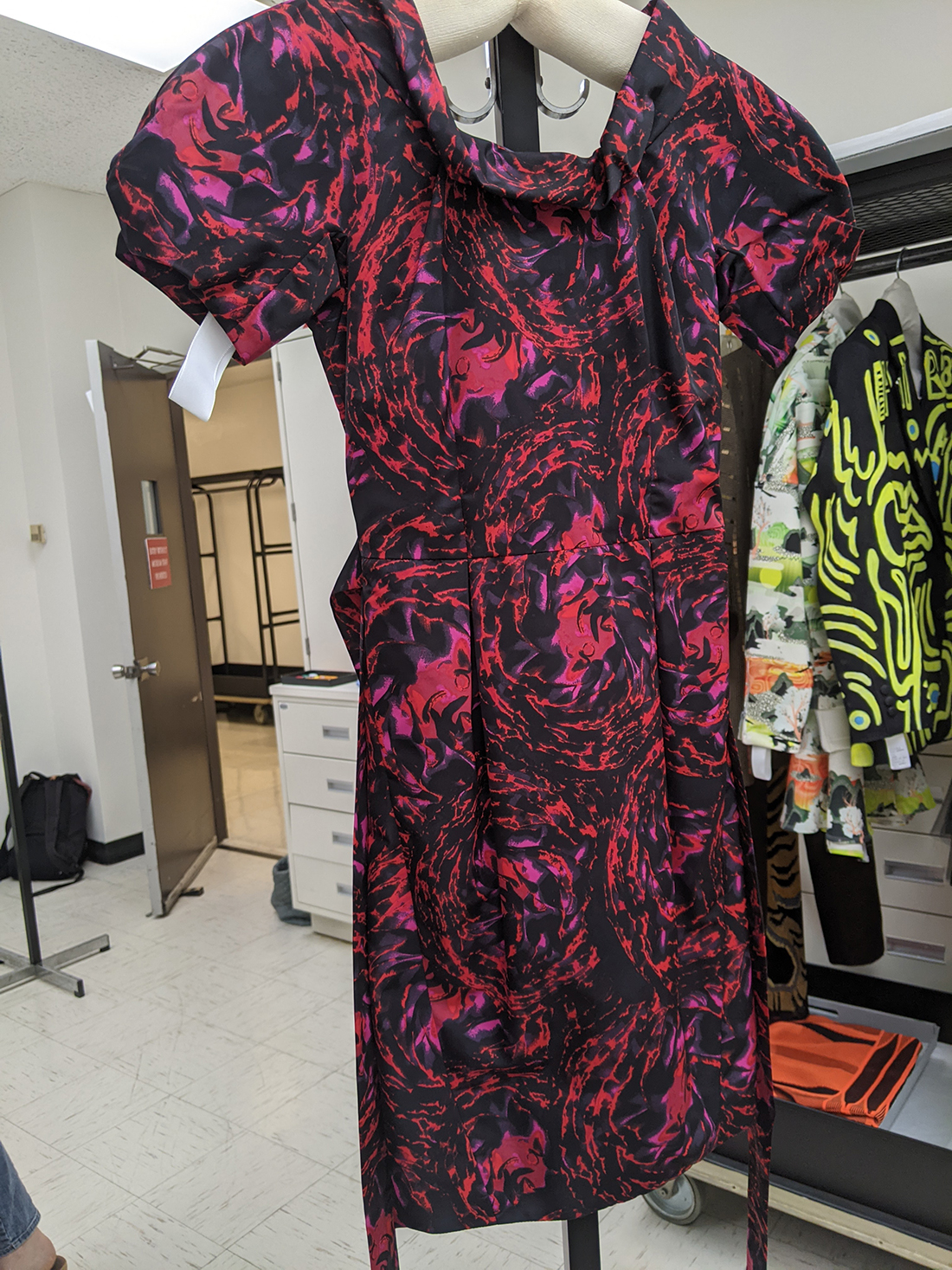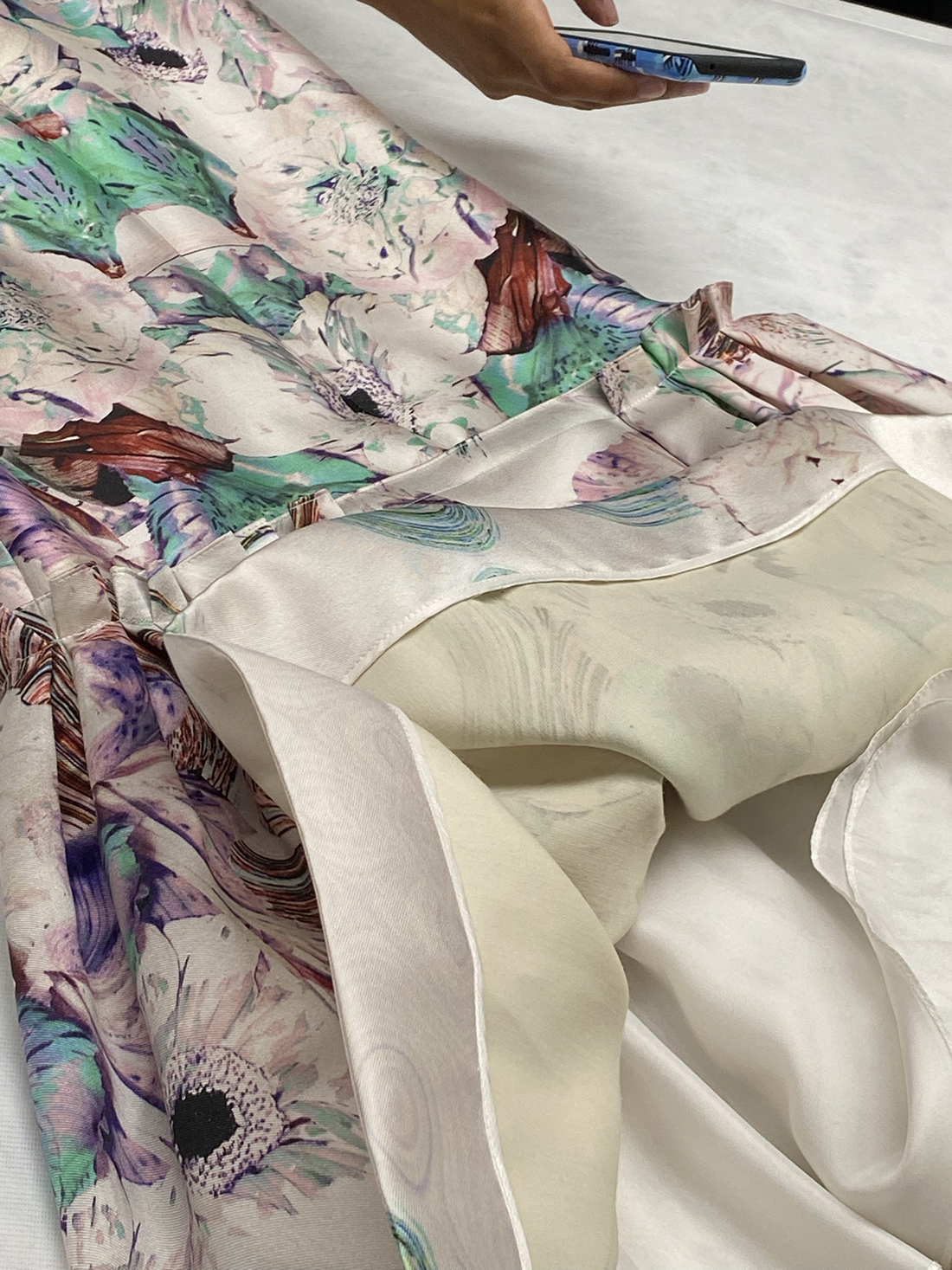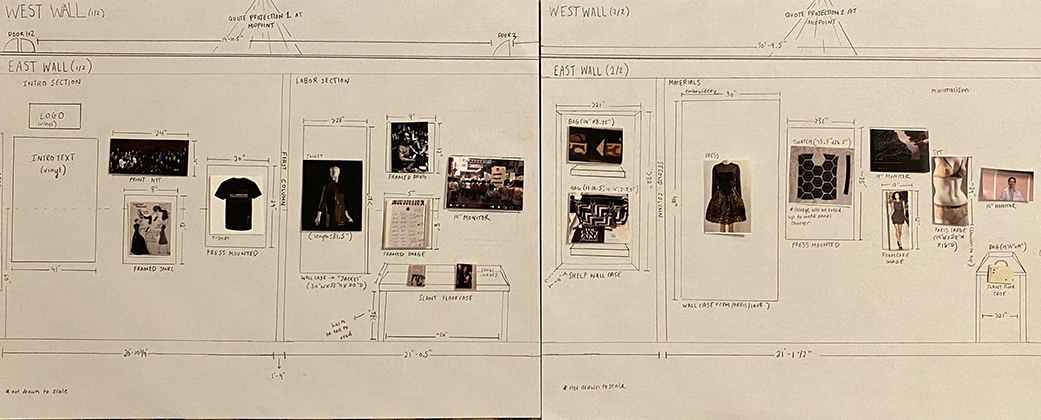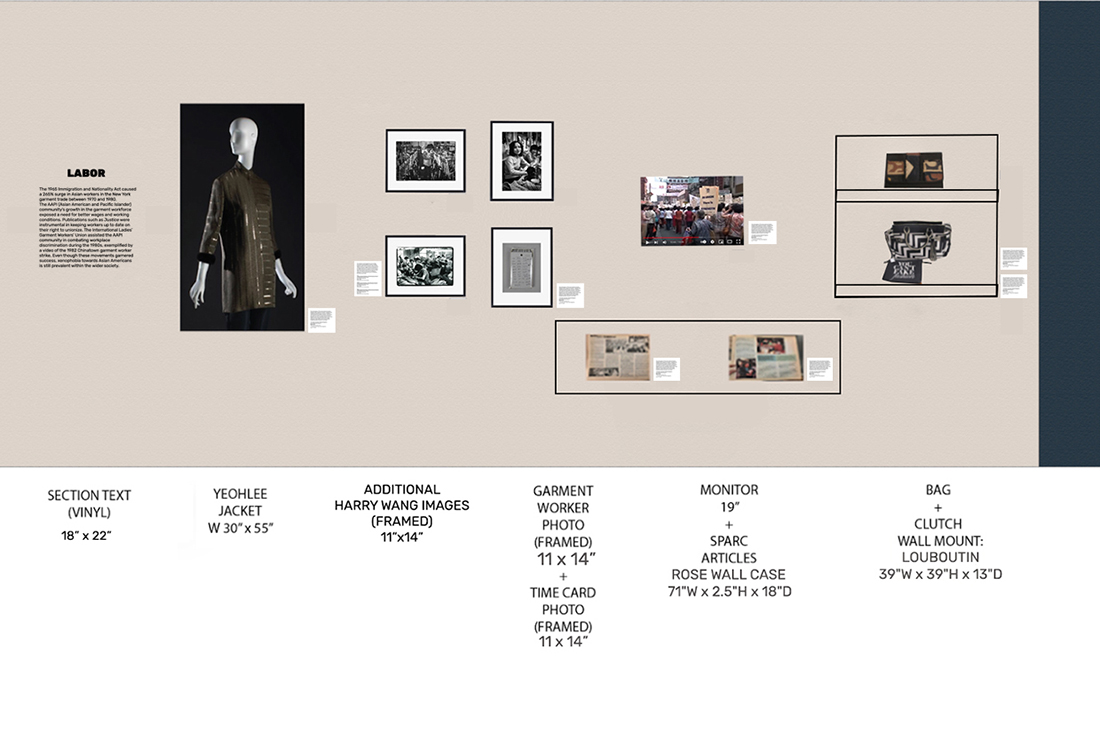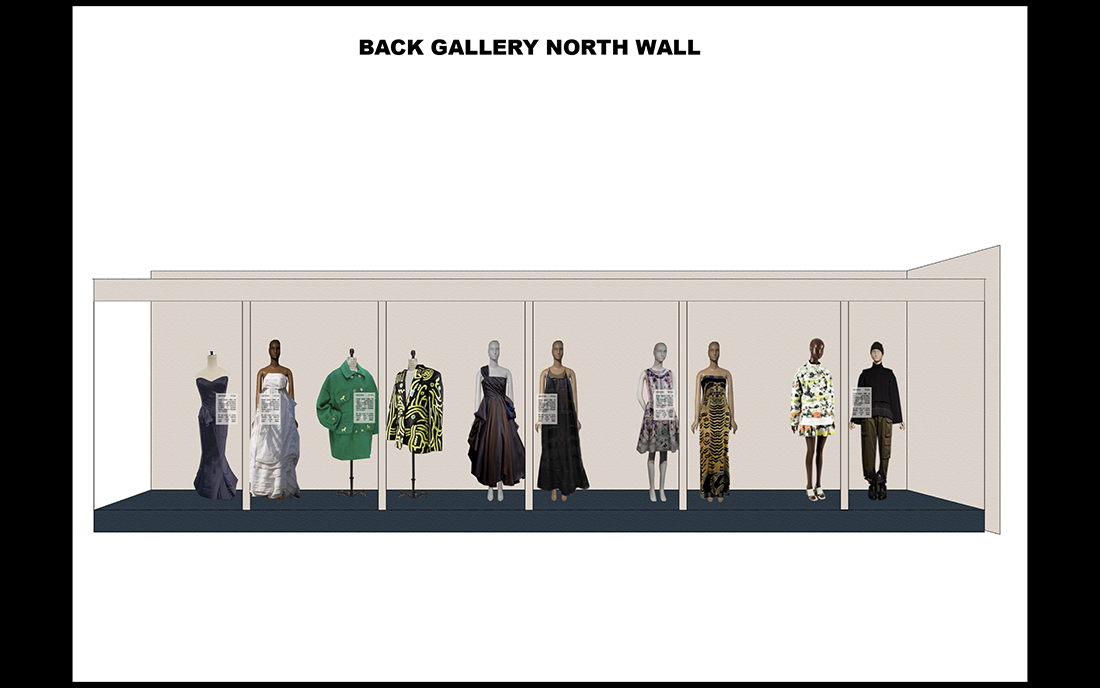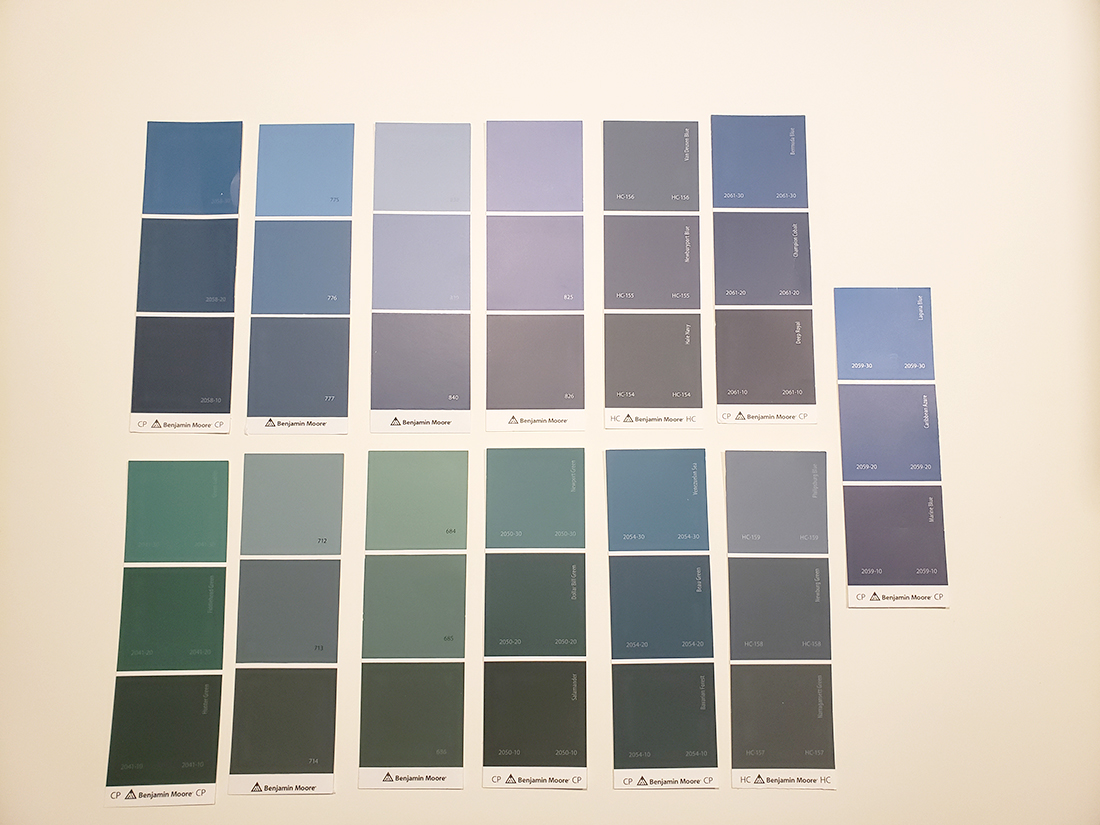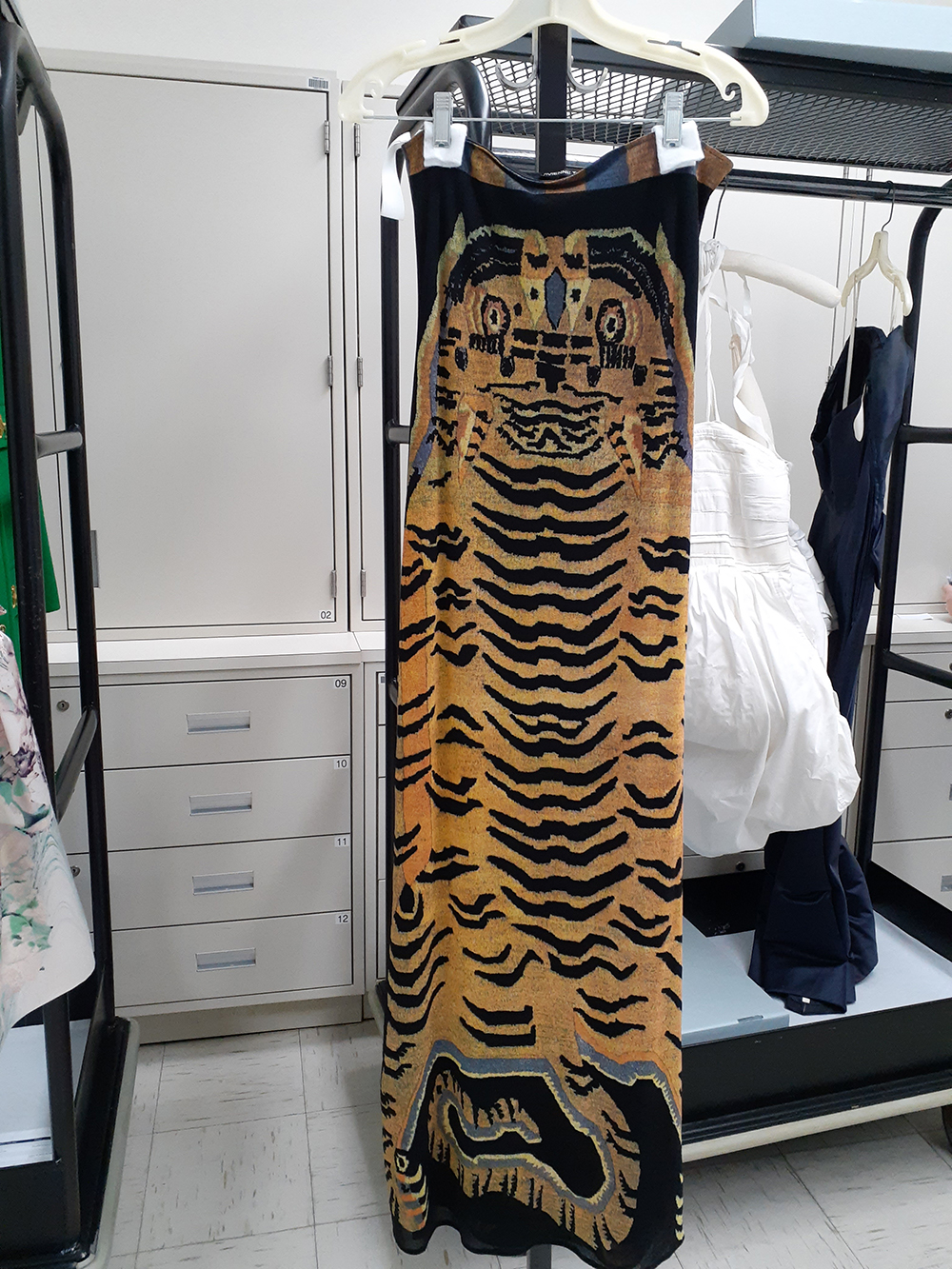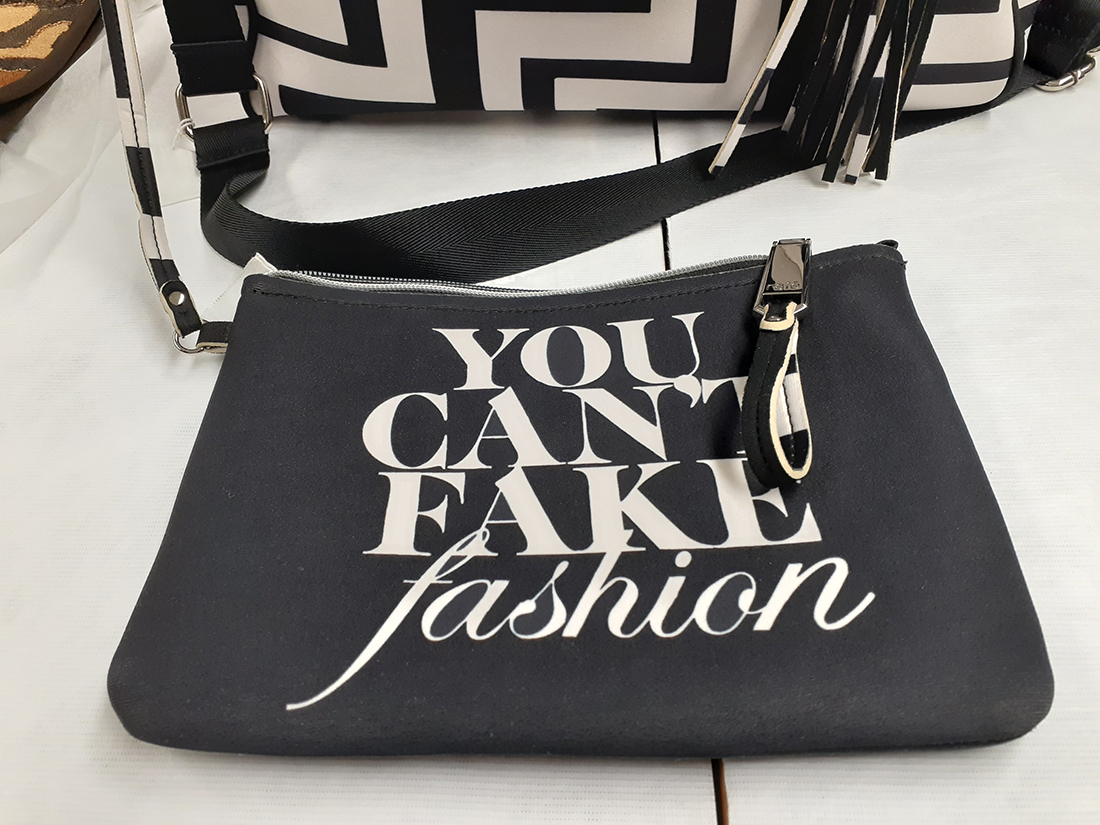Behind the Scenes
Planning for Asian Americans in New York Fashion: Design, Labor, Innovation started in spring 2021. New York City and the world were still in the midst of coping with the COVID-19 pandemic, as well as anti-Asian hate crimes. In response, the students wanted to showcase Asian American fashion designers because we are proud of the community’s accomplishments. Our hope is to offer a stronger voice in opposition to the hostile acts of racism that are ongoing today.
During the summer of 2021, the students pursued in-depth research on historical time periods relating to Asian American fashion, labor and activism, as well we specific fashion designers. This research provided the foundation for the conceptual framework of the exhibition.;
The Fall 2021 semester was a pivotal time to utilize the summer’s research to further refine the concept and decide on the organization of the exhibition. The students voted to adopt an object-based approach to exemplify the thematic aspects of design, materials, and innovation. The object research and interpretation teams visited the Special Collections at FIT’s Gladys Marcs library to identify relevant paper objects.
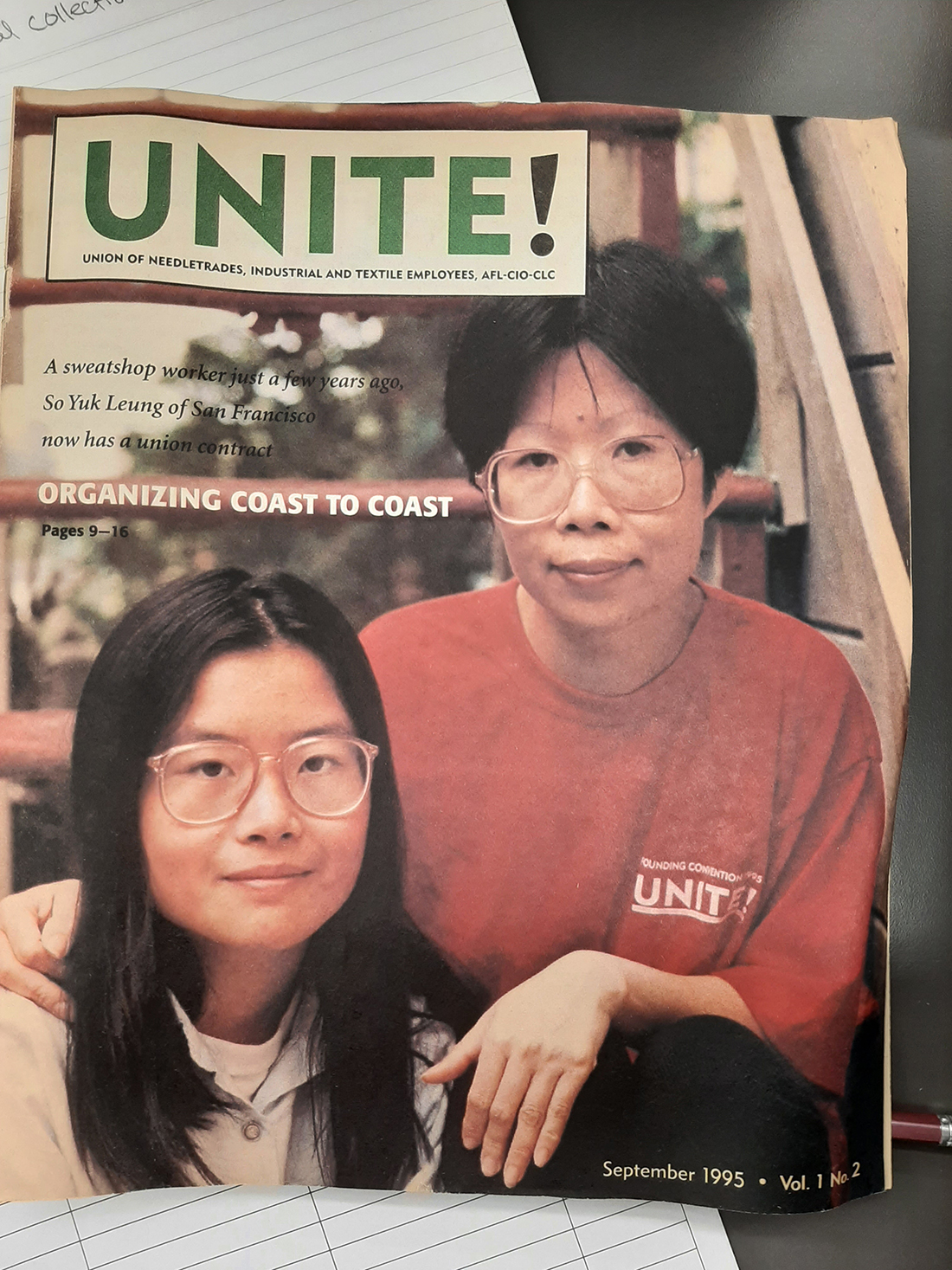
The decision-making process for selecting garments and accessories was based on object viewing sessions at The Museum at FIT (MFIT) and a class voting process. This democratic process allowed students from various teams to have a voice in the multi-faceted aspects of the exhibition planning. The objects were viewed hanging and placed on tables to observe the design details, materials, construction, and silhouette.
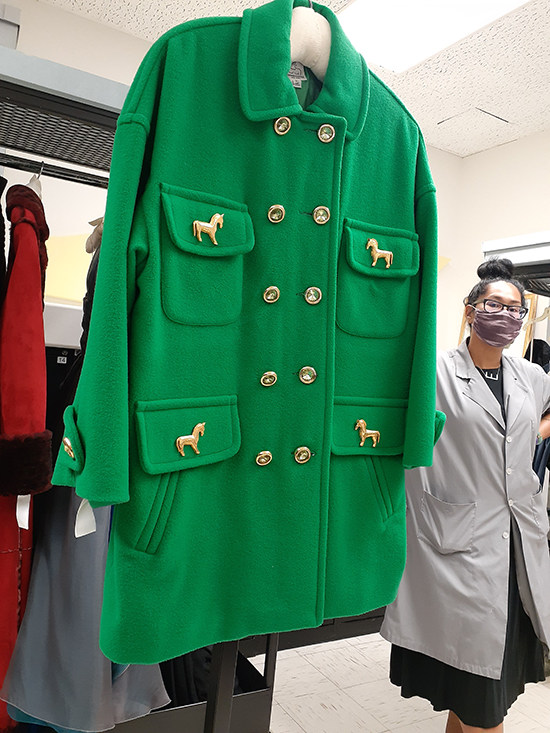
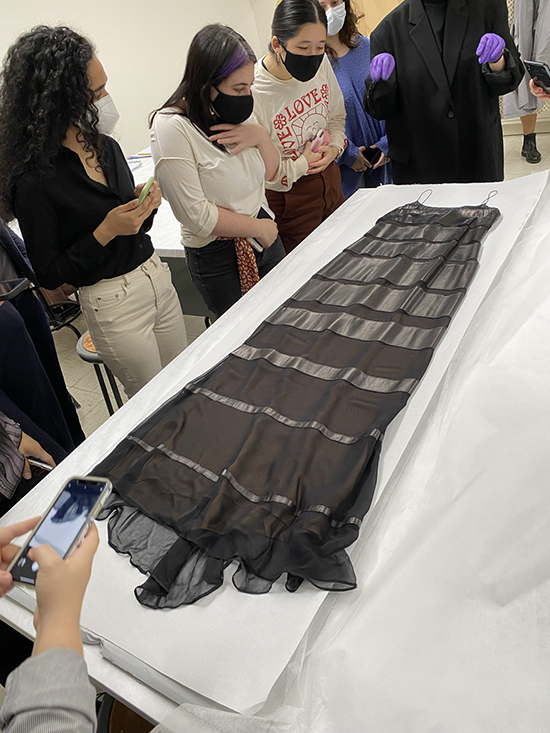
The student design team produced mock-ups of the gallery space to illustrate the flow of exhibition themes. The image below shows the Materials section near the beginning of the exhibition before it transitions into the rear gallery. The placement of each object was carefully considered to support the exhibition narrative. The students on the design team received class input and proposed the lay-out to MFIT colleagues.
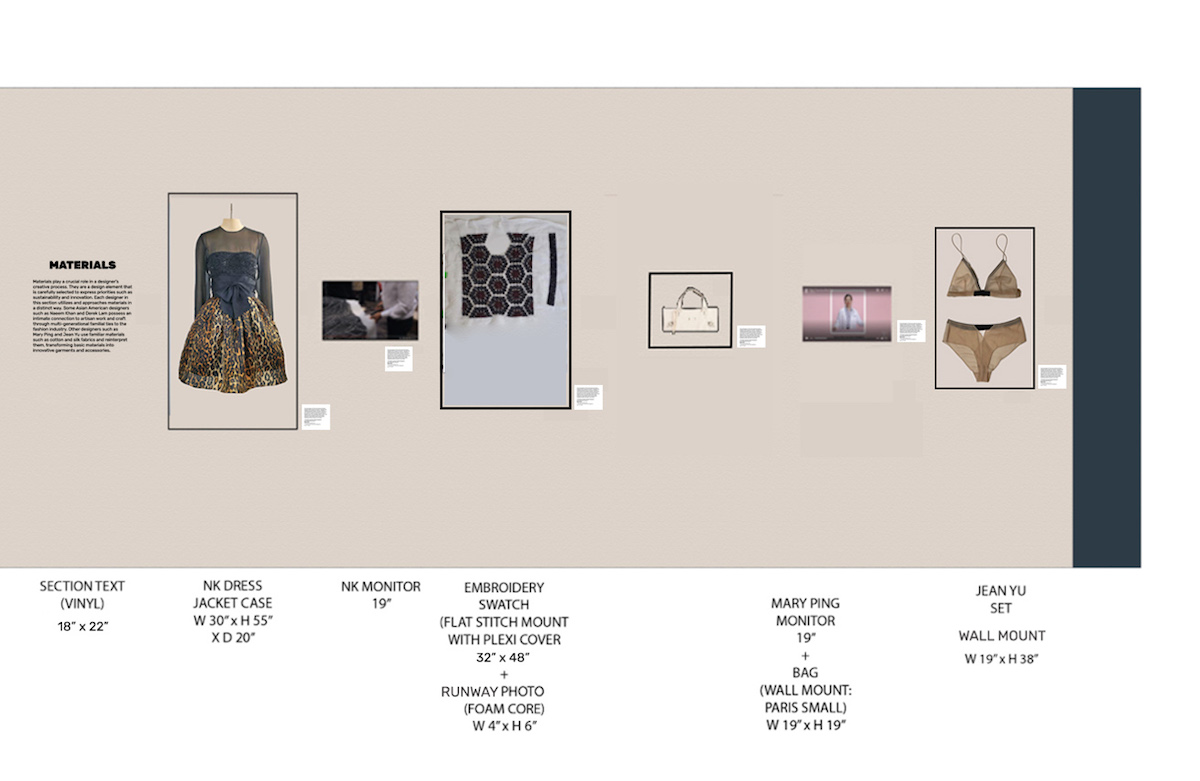
The graduate students collaborated with MFIT staff in all phases of the exhibition planning and design process, including curators, conservators, the MFIT digital media manager, and members of the education and exhibitions departments. December 14, 2021, the last day of class during the fall semester was a busy and productive one. The students viewed different formats for the designer quotes to be projected in the gallery. The MFIT staff is integral in teaching the students the practice of curation. For example, a label writing workshop was given by one of the MFIT partners.
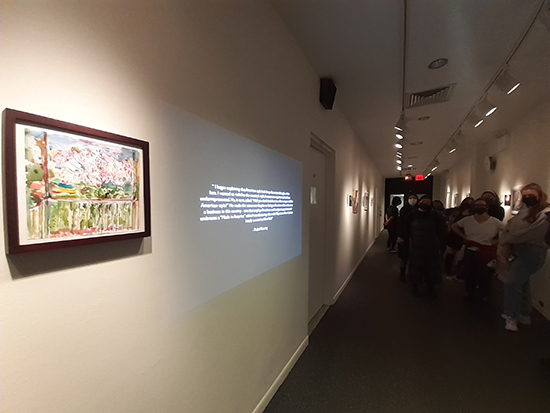
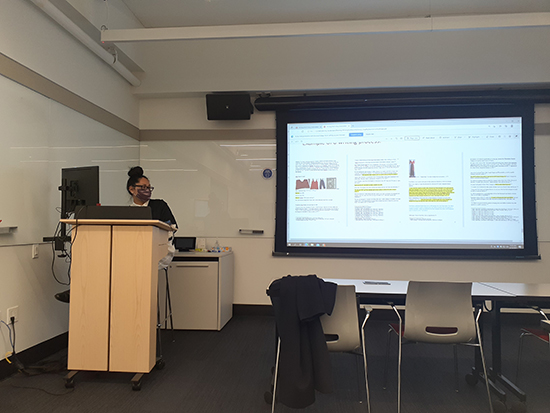
The Winterim 2022 break was filled with preparations to ensure the successful opening of the exhibition in March. One of the conservation students, Alexandra Blach, worked with MFIT conservators to inspect and document the garments in advance to determine any issues that might prohibit exhibition display. Alexandra is dressing the Jussara Lee gown on a mannequin with the assistance of an MFIT partner.
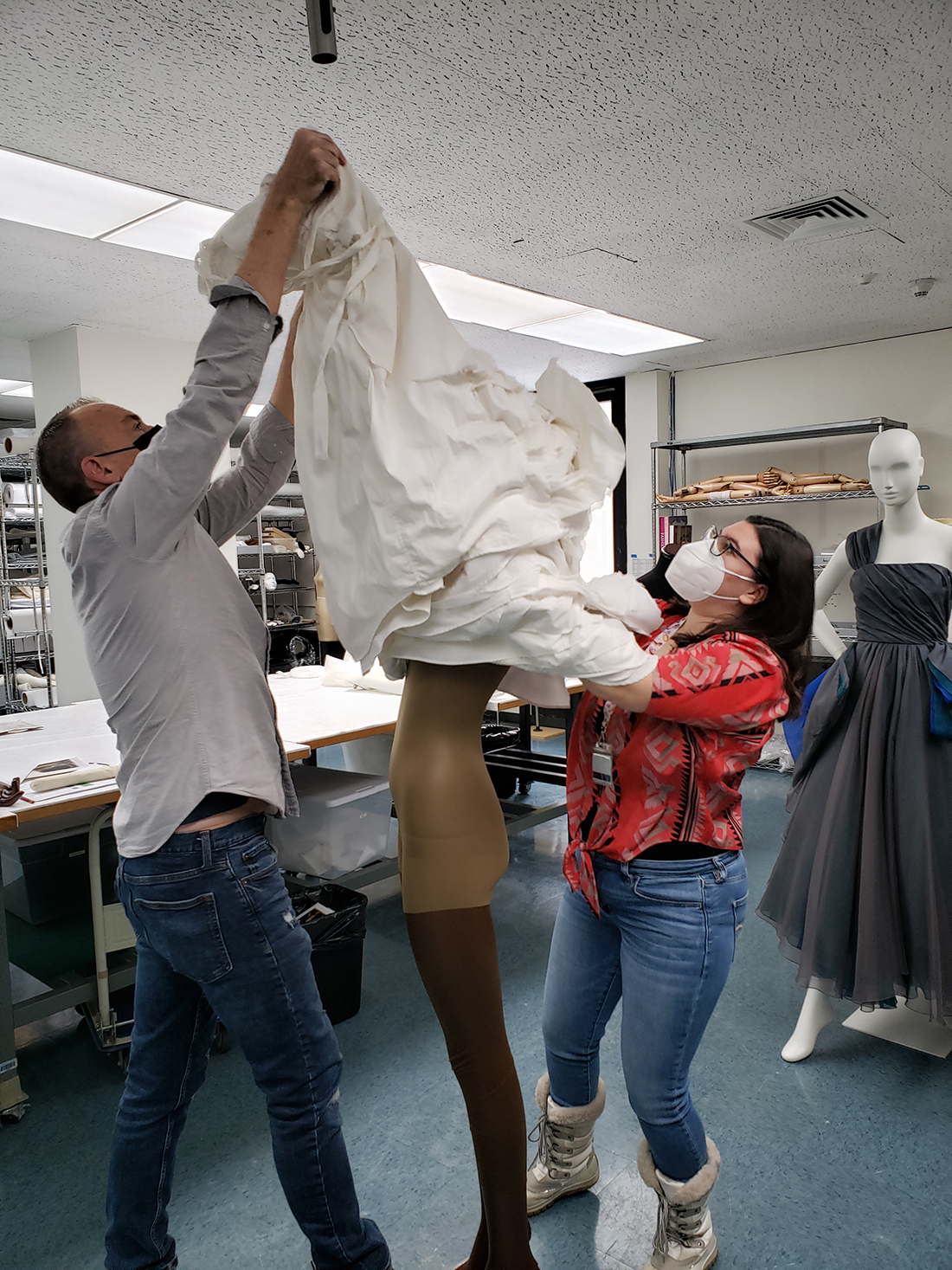
The beginning of the spring 2022 semester is a fast-track to complete a multitude of tasks for the opening on March 2, 2022. Jaya Misra from the design team works closely with a MFIT partner to inspect the fabric that will be used in the exhibition.
